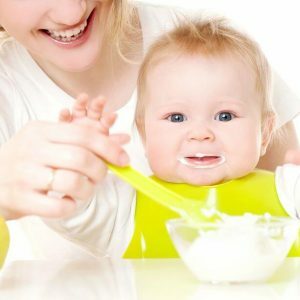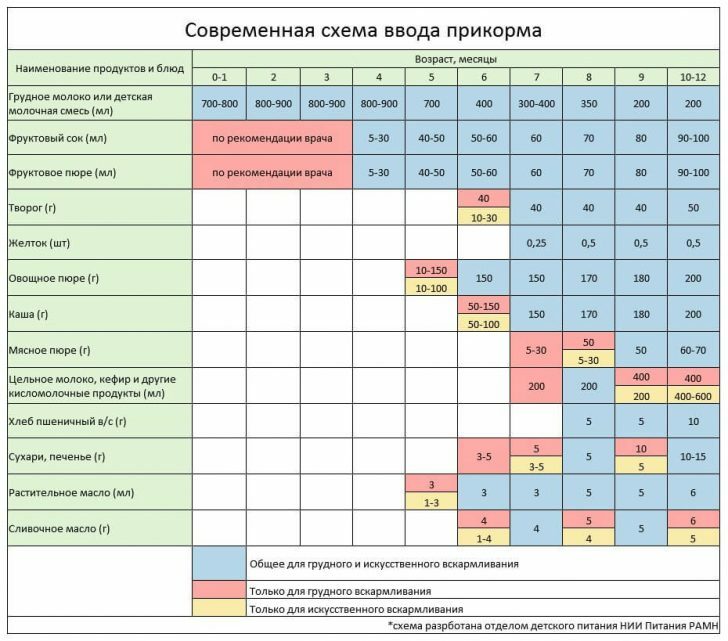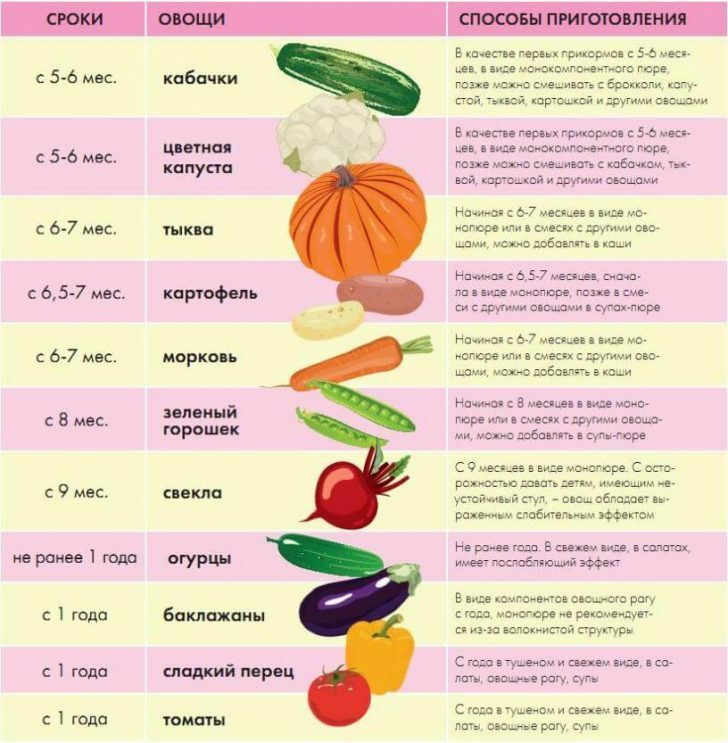When to introduce complementary feeding: a complementary schedule

The best food for babies is mother's milk - it's tasty, and very useful.But there always comes a time when it is necessary to give babies a lure and here there are many questions from the parents.Experiments and experiments in this case are excluded, because at stake is the health and even the life of the child.
Table of contents: Advice for parents on complementary feeding for babies Signs that the baby is ready for lure Addict scheduleTips for parents for complementary feeding for infants
For correct introduction of complementary foods into the ration of infants, parents should already by the month of the child's age to knowThe basic rules of this event:
- The first food for a small child needs to be cooked properly - grind and necessarily dilute with either boiled water or breast milk.
- Any lure should be entered as gently as possible, gradually.You need to start with half a teaspoon, the maximum amount for the first "tasting" - one teaspoon of the product.
- After the baby was given a lure for the first time, it is necessary to carefully monitor his health for 12 hours.If there is an allergy( for example, rashes on the skin or redness of the cheeks), the baby suffers from constipation or suddenly he became disturbed by colic in the abdomen( increased gas formation), previously given as a complementary food should be excluded and report an inadequate reaction to the pediatrician.
- A baby should get used to one product and only after a while you can enter a new dish.The child will understand the taste of each product, the digestive system will "learn" it adequately, and it will be possible to find out the cause of the allergy or digestive disorders quickly.
- Before giving the baby a lure, you need to give it milk.Then a little extra food is given and the "meal" is finished again with milk or a mixture.So the child will be easier to switch to a new diet.
- Only fresh and environmentally friendly products can be used as complementary foods.Doctors recommend using complementary mixtures for industrial production, which are sold in specialized outlets.
- If the decision is made to add milk to the finished product( mashed potatoes from the store) as a complementary supplement, then always refer to two points:
- date of manufacture - the product must be as fresh as possible, otherwise, the baby can get poisoned;
- the composition of the product - it should not contain salts, sugar, dextrose and sucrose, since these components can cause the development of an allergic reaction;
- There are products that are categorically not suitable for complementary foods.For example, eggs should be only dietary, honey is allowed to eat at the age of 12 months and above, and nuts and mushrooms are generally allowed to enter the child's diet from two or even three years.
- Any lure should be given to the baby with a spoon - the food will be processed by the baby's saliva, and this has a beneficial effect on the stomach.
These recommendations will help parents smoothly and safely transfer the baby from breastfeeding to a "common table".Many parents are interested in the age at which a baby can begin to introduce complementary foods into the diet.And here it is important to understand that the child himself is ready to "get acquainted" with the culinary world.
Signs that the baby is ready for lure
Doctors say that from 4 to 6 months you can begin to introduce the feeding of a baby in the form of vegetable purees.But this is only one of the factors that become decisive when choosing the time for introducing complementary foods. Parents should know that it will indicate the willingness of the baby to adopt a new product:
-
 the age of the baby has reached 4 months;
the age of the baby has reached 4 months; - the child's weight became twice as much as was at birth;
- expulsion reflex tongue is already absent - it is easy to check: you need to give the baby water from a spoon and if it does not turn out all on the chin of a crumb, you can safely start to introduce a lure;
- ability to show their emotions - the child can bend / reach for the spoon with food and, conversely, turn away from the proposed, showing reluctance;
- in one feeding drinks milk in the breast "to the bottom", but insistently asks more - it concerns children who are on natural feeding;
- the kid is able to grasp the object and pull it to himself;
- clearly shows interest in "adult" food and every time tries to taste it.
In general, it is difficult to give a specific answer to the question of when to introduce lactation to a baby, it's all too individual.Some children respond well to complementary feeding at the age of four months, some are willing to try a new product only in 6 months, but there are also children who are happy to perceive new food only in 9 months.
Note: doctors recommend parents not to rush to introduce complementary foods to the baby, especially if the baby does not show concern about hunger.
Complementary chart
Another question regarding the complementary feeding that parents ask is what and when it is best to introduce the baby into the food intake from the products.In this regard, it is better to follow the recommendations of pediatricians who clearly explain to parents the complementary feeding schedule. Doctors advise:
- in 4-6 months give the baby vegetable mashed potatoes( from carrots, potatoes, cauliflower or zucchini), porridge( rice, corn and buckwheat) and oils( vegetable / olive and creamy);
- in 6-7 months can offer crumbs for tasting cottage cheese, lean meat, fruit juice, egg yolk and dry biscuits;
- in 7-8 months is introduced fish of low-fat varieties and fermented milk products;
- in 8-12 months, you can safely give the child almost all products from the "general table", including pasta and bread.
The approximate scheme of complementary feeding is presented in the tables:

The tongue, liver and other by-products should be entered into the child's diet at the age of 12 months and older.The first lure should be in the form of mashed potatoes, but as the baby grows up, the appearance of teeth and hardening of the gums' gums tissues should use foods from complementary foods already in pieces.By the age of 9 months, a child who develops within the limits of the norm should be able to chew the food on his own and therefore, he does not need to grind his lure.

Introduction of complementary feeding in the diet of infants is the crucial moment.Only on how correctly this will be done depends on the normal functioning of the digestive system of the baby.
Yana Tsygankova, medical reviewer, therapeutist of the highest qualification category.



